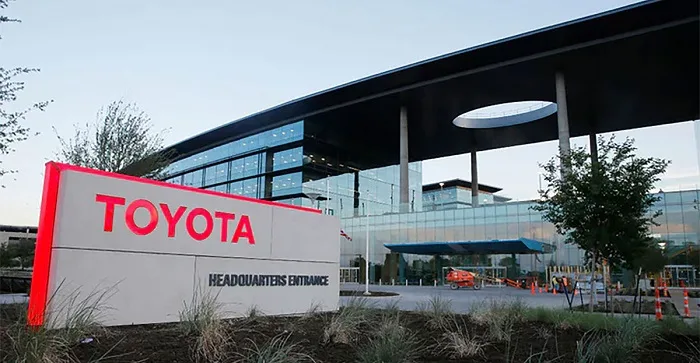
Toyota: The Story of Success
Toyota, a name synonymous with reliability and innovation, has grown from humble beginnings to become one of the largest and most influential automobile manufacturers in the world. This article delves into the journey of Toyota, exploring its origins, early endeavors, challenges, and the strategies that led to its remarkable success.
What Kind of Company and Where Did It Come From
Toyota Motor Corporation was founded in 1937 by Kiichiro Toyoda, a visionary who saw the potential of the automobile industry. The company’s roots, however, trace back to the late 1800s when Sakichi Toyoda, Kiichiro’s father, invented the automatic loom. This invention laid the foundation for the Toyoda family’s business ventures and eventually led to the establishment of Toyota as an automobile manufacturer.
Located in Toyota City, Japan, the company started as a division of Toyoda Automatic Loom Works. Kiichiro Toyoda’s passion for automotive technology and his commitment to innovation drove the company to create its first passenger car, the Model AA, in 1936. Despite the challenging economic environment and the scarcity of resources, Toyota’s dedication to quality and continuous improvement, known as “kaizen,” set it on a path of steady growth.
What You Did Initially and What You Are Doing Now
In its early years, Toyota faced numerous challenges, including competition from established American and European manufacturers and the need to develop a robust supply chain. Initially, the company focused on producing simple, affordable vehicles that could meet the basic needs of Japanese consumers. The post-World War II era was particularly tough, but Toyota’s resilience saw it through these difficult times.
Today, Toyota is a global powerhouse, producing millions of vehicles annually and leading the industry in hybrid technology with its Prius line. The company has expanded its product range to include luxury vehicles under the Lexus brand, as well as a variety of commercial and industrial vehicles. Toyota’s commitment to sustainability and innovation continues to drive its success, as evidenced by its investment in electric and hydrogen fuel cell technologies.
What Problems the Company Faced
Toyota’s journey was not without obstacles. One of the significant challenges was the oil crisis of the 1970s, which forced the company to rethink its strategy and focus on fuel-efficient vehicles. The crisis highlighted the need for a diverse portfolio that could withstand global economic fluctuations.
Another major setback occurred in the late 2000s when Toyota faced a series of recalls due to safety issues. The recalls, which involved millions of vehicles, damaged the company’s reputation and led to significant financial losses. The issues ranged from unintended acceleration to faulty brakes, raising concerns about Toyota’s quality control processes.
The global financial crisis of 2008 also posed a challenge, as it affected consumer spending and led to a decline in vehicle sales worldwide. Toyota had to navigate these turbulent times while maintaining its commitment to innovation and quality.
How They Dealt With These Problems
Toyota addressed the oil crisis by investing in research and development to create more fuel-efficient vehicles. This led to the development of the Toyota Prius, the world’s first mass-produced hybrid car. The Prius not only boosted Toyota’s image as an environmentally friendly company but also set the standard for hybrid technology in the automotive industry.
In response to the safety recalls, Toyota implemented a series of measures to improve its quality control and customer service. The company established a special committee for global quality and enhanced its recall processes to ensure swift and effective responses to potential issues. Toyota also increased transparency and communication with its customers to rebuild trust.
During the global financial crisis, Toyota focused on cost-cutting measures and optimizing its production processes to remain competitive. The company also accelerated its efforts in emerging markets, which were less affected by the crisis, to sustain its growth. These strategies helped Toyota to recover and regain its position as a leading automobile manufacturer.

Innovation and Sustainability
Toyota’s success is deeply rooted in its commitment to innovation and sustainability. The company’s philosophy of continuous improvement, or “kaizen,” encourages employees at all levels to seek ways to enhance processes and products. This approach has led to numerous technological advancements and efficiency improvements over the years.
One of Toyota’s most significant contributions to the automotive industry is its pioneering work in hybrid technology. The Toyota Prius, introduced in 1997, revolutionized the market and demonstrated the potential of hybrid vehicles. Today, Toyota continues to lead in this area, with a wide range of hybrid models available globally.
In addition to hybrid technology, Toyota is investing heavily in electric and hydrogen fuel cell vehicles. The company aims to achieve carbon neutrality by 2050 and is actively developing sustainable solutions to reduce its environmental impact. Toyota’s Environmental Challenge 2050 outlines its goals for sustainability, including reducing CO2 emissions and promoting recycling and resource efficiency.
Future Prospects and Vision
Looking ahead, Toyota is focused on transforming itself into a mobility company that goes beyond traditional automobile manufacturing. The company is exploring new business models and technologies, such as autonomous driving, connected vehicles, and smart cities. These initiatives are part of Toyota’s vision to create a safer, more efficient, and sustainable future for all.
Autonomous driving is a key area of focus, with Toyota investing in advanced driver-assistance systems (ADAS) and developing partnerships with tech companies to accelerate progress. The goal is to create vehicles that can operate safely and efficiently with minimal human intervention, reducing accidents and improving traffic flow.
Connected vehicles are another critical aspect of Toyota’s future strategy. By leveraging data and connectivity, Toyota aims to enhance the driving experience, improve vehicle maintenance, and offer new services to customers. The company’s investments in smart city projects, such as the Woven City in Japan, showcase its commitment to creating integrated, technology-driven urban environments.
